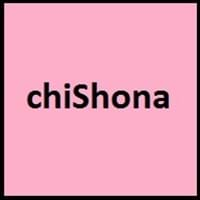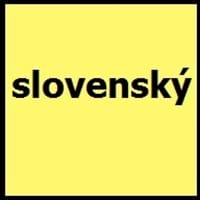Countries
Zimbabwe
Czech Republic, European Union, Serbia, Slovakia
National Language
Botswana, Mozambique, Zimbabwe
Slovakia, Vojvodina, Serbia
Second Language
Not spoken in any of the countries
Not spoken in any of the countries
Speaking Continents
Africa
Europe
Minority Language
Not spoken in any of the countries
Czech Republic, Hungary, Russia, Ukraine
Regulated By
Not Available
Ministry of Culture of the Slovak Republic
Interesting Facts
- Shona language is tonal language.
- The African people in Zimbabwe is made of 10 ethnic groups, each speaking a different languages, shona is spoken by 60 percent of population.
- Slovak language was written using Glagolitic Alphabets,in 1843.
- Until the end of 18th century, Slovak did not exist as written language.
Similar To
Kalanga and Nambya Language
Czech Language
Derived From
Not Available
Czech-Slovak Language
Alphabets in
Shona-Alphabets.jpg#200
Slovak-Alphabets.jpg#200
Writing Direction
Not Available
Left-To-Right, Horizontal
Time Taken to Learn
Not Available
Thank You
Waita zvako
Ďakujem vám
How Are You?
Wakadini zvako?
Ako sa máte?
Good Night
Urare zvakanaka
Dobrú noc
Good Evening
Manheru
Dobrý večer
Good Afternoon
Masikati
Dobré popoludnie
Good Morning
Mangwanani
Dobré ráno
Please
Ndinokumbirawo
Prosím
Sorry
Ndineurombo
Pardón!
I Love You
Ndinokuda
Ľúbim Ťa
Excuse Me
Pamusoro
Prepáčte!
Dialect 1
Hwesa
Eastern Slovak
Where They Speak
Zimbabwe
Abov, Saris, Spis, Zemplin
Dialect 2
Karanga
Central Slovak
Where They Speak
southern Zimbabwe
Gemer, Hont, Liptov, Novohrad, Orava, Tekov, Turiec
Dialect 3
Zezuru
Western Slovak
Where They Speak
central Zimbabwe, Mashonaland
Kysuce, Nitra, Trencin, Trnava, Zahorie
Speaking Population
Not Available
Native Name
Not Available
slovenčina
Alternative Names
Chishona, “Swina” (pej.), Zezuru
Slovakian, Slovencina
French Name
shona
slovaque
German Name
Schona-Sprache
Slowakisch
Pronunciation
Not Available
Not Available
Ethnicity
Not Available
Slovaks
Origin
20th century
6th Century
Language Family
Niger-Congo Family
Indo-European Family
Subgroup
Benue-Congo
Slavic
Early Forms
Not Available
Proto-Slavic
Standard Forms
Not Available
Slovak
Language Position
Not Available
Signed Forms
Not Available
Not Available
Scope
Individual
Individual
ISO 639 6
Not Available
Not Available
Glottocode
core1255
slov1269
Linguasphere
99-AUT-a
53-AAA-db
Language Type
Living
Living
Language Linguistic Typology
Not Available
Subject-Verb-Object
Language Morphological Typology
Not Available
Synthetic
All Shona and Slovak Dialects
Most languages have dialects where each dialect differ from other dialect with respect to grammar and vocabulary. Here you will get to know all Shona and Slovak dialects. Various dialects of Shona and Slovak language differ in their pronunciations and words. Dialects of Shona are spoken in different Shona Speaking Countries whereas Slovak Dialects are spoken in different Slovak speaking countries. Also the number of people speaking Shona vs Slovak Dialects varies from few thousands to many millions. Some of the Shona dialects include: Hwesa, Karanga. Slovak dialects include: Eastern Slovak , Central Slovak. Also learn about dialects in South American Languages and North American Languages.
Shona and Slovak Speaking population
Shona and Slovak speaking population is one of the factors based on which Shona and Slovak languages can be compared. The total count of Shona and Slovak Speaking population in percentage is also given. The percentage of people speaking Shona language is 0.13 % whereas the percentage of people speaking Slovak language is Not Available. When we compare the speaking population of any two languages we get to know which of two languages is more popular. Find more details about how many people speak Shona and Slovak on Shona vs Slovak where you will get native speakers, speaking population in percentage and native names.
Shona and Slovak Language Codes
Shona and Slovak language codes are used in those applications where using language names are tedious. Shona and Slovak Language Codes include all the international language codes, glottocodes and linguasphere.





